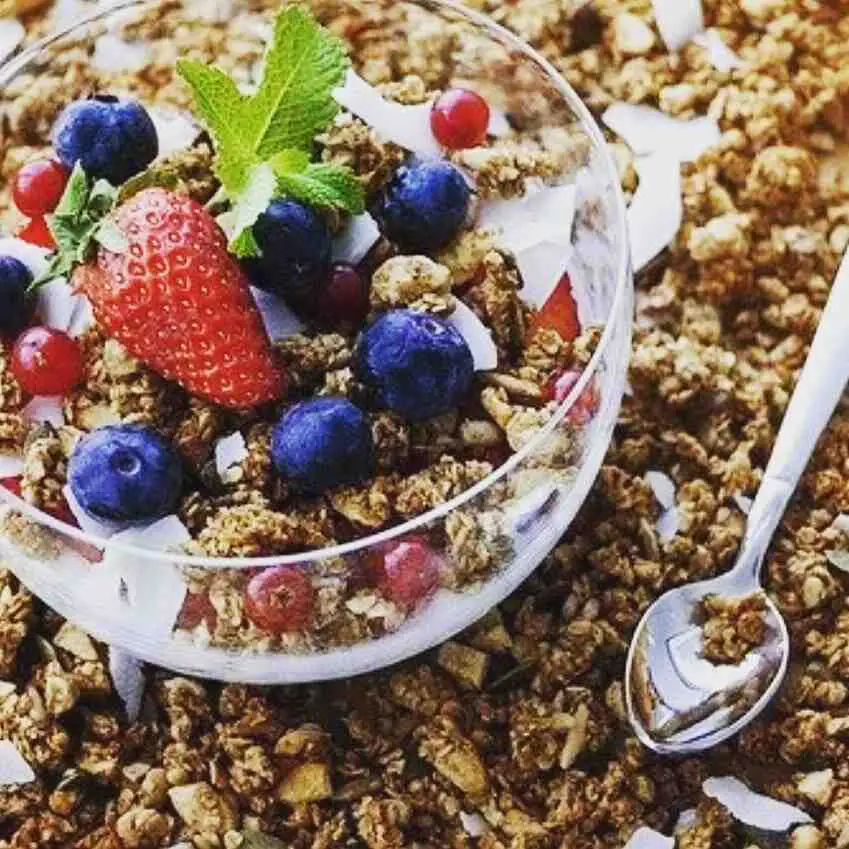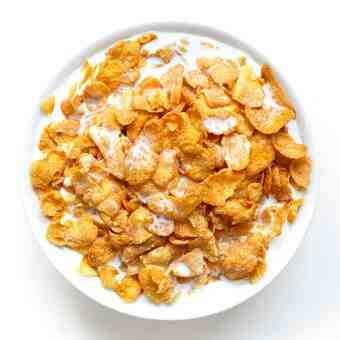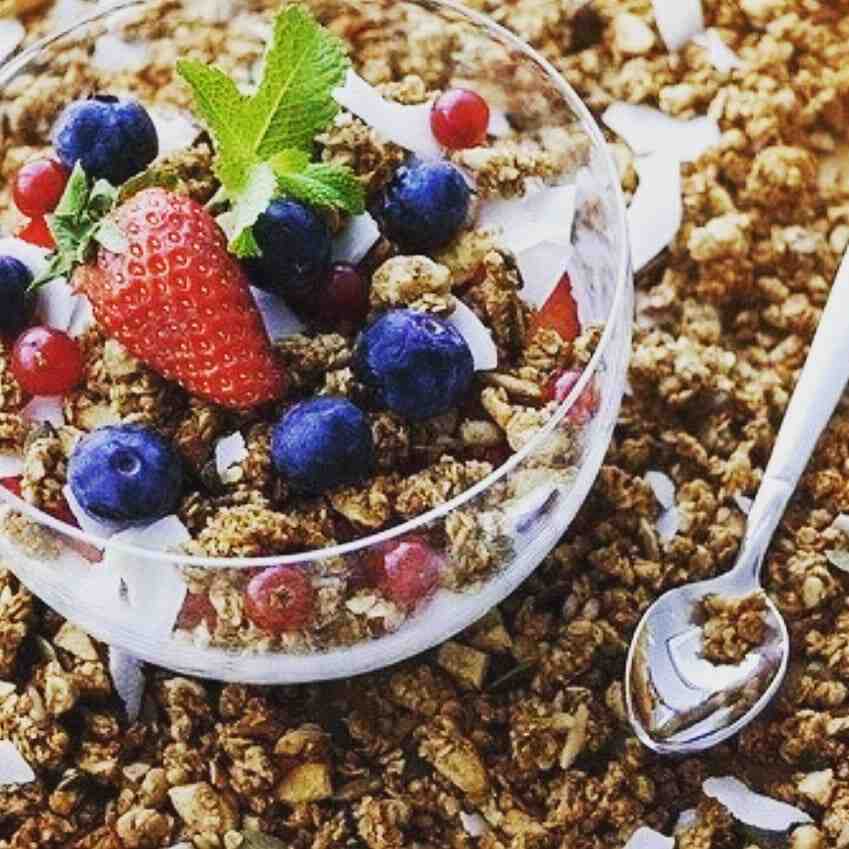Cereals for breakfast are a great classic. It’s a habit for many people, the first taste with which they greet the new day, but that doesn’t mean that it’s not possible to change the type of cereal from time to time! So let’s take a look at the various types of cereal available to us, looking at what is healthier, and also learn which ingredients can go best with milk, yogurt, or fresh fruit.
What are cereals
In the large family of cereals, we can find 9 whole grains – which are wheat or wheat, brown rice, corn or maize, spelled, barley, oats, rye, millet, and Khorasan wheat. Added to these we have also the three pseudo-cereals, i.e. buckwheat, amaranth, and quinoa sharing similar nutritional characteristics with cereals, such as the presence of fiber and quality carbohydrates.
RELATED:

The various forms of cereals
In addition to the natural cereals, there is also another element that differentiates breakfast cereals, namely the type of processing: some techniques, such as blowing and extrusion, subject the cereal to high temperatures and therefore cause a more significant impact on the nutritional value, while others, such as flaking, allow for better conservation of the nutritional properties of the grain.
From this point of view, we can distinguish these forms of cereals: cereal flakes, puffed cereal grains, and shaped cereals.
Cereal Flakes
They are the product of flaking, they are obtained from whole grains of cereals and represent the most “natural” form of breakfast cereals: the processing is very simple and simply consists of steaming and crushing the grains, then toasting or drying them.
Puffed Cereal Grains
Blowing consists in heating grains of cereal under pressure at high temperatures, so as to rapidly evaporate the water contained inside the grain, causing it to “burst”. In this process, many vitamins and nutrients are lost, and thus the cereals produced are then artificially enriched.
Balls, petals, rings
All cereals with particular shapes are obtained by extrusion, the technique that compromises the nutritional values of the original cereal grain in the worst way. Processing is divided into three phases: grinding of the cereals, heating at high temperatures, and finally pressing in a mold, which gives the dough the desired shape.
The types of breakfast cereals
But there is also another classification that we can make, which takes the finished product into consideration and therefore closely interests those looking for ways to eat cereals for breakfast. In this sense, we recognize four types of cereals:
- Classic cereals
- Fitness cereals/brean
- Sugary cereals
- Muesli, cruesli and granola
The so-called classic cereals include, rolled oats, buckwheat flakes, corn flakes, and puffed rice. In general, the list of ingredients is very short and includes only one or more cereals with added salt and sugar. These additions are very critical in terms of healthiness and I recommend carefully evaluating them together with vitamins and minerals. Clearly, the type of cereal also affects the nutritional properties. As I mentioned previously, puffed rice is on average more caloric and contains less fiber than flaked cereals.
The second category is that of fitness and bran cereals: generally whole grain products, based on one or more cereals, to which ingredients such as sugar, flavorings, additives, vitamins, and minerals can be added; moreover, in many cases, they also contain fruit or chocolate affecting the calorie content. Bran-based cereals are lower in calories with a high percentage of fiber compared to cereals with chocolate which also contain more fat.
We then move on to the group of sugary cereals, so called because they have enriched formulations and recipes and are usually glazed with sugar or honey, those with chocolate, or those filled with creams, generally aimed at a younger target audience, such as children. However, these so-called cereals are less “healthy” than other products: usually, they have a lot of fat also because they contain vegetable oils (palm, rapeseed, or sunflower). However, they try to “compensate” by adding vitamins and minerals.
We end up with another large family, the one that includes muesli, cruesli, and granola: muesli is a breakfast cereal based on oat flakes enriched with dried fruit, dried fruit or chocolate (or a combination of these ingredients); the other products – cruesli, crunchy, crunchy muesli or granola – are variants made crunchier and tastier by adding oil and sugar and baking them in the oven.

The benefits of cereals for breakfast
Cereals for breakfast are a good choice because they allow us to fill up on energy to face the day, as a valuable source of complex carbohydrates. Furthermore, cereals are rich in fiber and are good for the intestines because they facilitate intestinal transit; they have a good supply of mineral salts, which allow us to feel better, increase concentration, and improve memory.
Obviously, not all cereals have the same properties and, as we have seen, some products contain fat, especially when enriched with chocolate drops or other delicacies, and their consumption must be well evaluated and measured, especially within a slimming diet, for which they are not very suitable.
I also recommend balancing the high amount of carbohydrates with proteins such as Greek yogurt, milk, and any other form of lean protein.
How to choose cereals for breakfast
We therefore have a wide choice of cereals for breakfast, and the nutritional table on the package can be the right reference to find the ones that best suit our needs.
Cornflakes. This can be healthy but I suggest adding more protein enjoying it in a cup of milk or yogurt, and adding nuts and red fruits to make it more nutritious.
Puffed rice. It tastes great to kids, but it doesn’t contain many natural vitamins. Hence I suggest allowing this on our table only if we add fresh fruit to our cereal. I also suggest mixing it with healthier cereals explaining to kids that one has a great taste but the other one is necessary for your body.
Spelled, soy, and quinoa. These are perfect for everyone but especially athletes, who need to ensure they eat enough proteins which contributes to the maintenance of muscle mass.
Muesli and granola. They contain dried fruit, oilseeds, and dried fruit, but ideally, we should prepare them ourselves to avoid the added sugars that are present in packaged products. There are many various granola recipes to try!
Bran. This is the ideal cereal for those with lazy bowels because it is rich in insoluble fibers which favors the elimination of waste products: wheat bran, in particular, contains up to 40% fiber, while oat bran reaches 15% of its weight. We can try it with a cup of probiotic yogurt, for a complete breakfast that can get the intestinal bacterial flora back on track.
What to look for in nutritional tables?
As a general rule, the ingredient list should be short and contain only the grain or a few other ingredients. The healthiest choice is, therefore, a product that has processed cereals as the only ingredient – i.e. oats, barley, wheat, corn, rice or spelled, millet, quinoa or amaranth – or that contains dried or dried fruit, oilseeds, and various types of cereal together (such as granola)
When we read the label look at the 100-gram value:
- Sugar levels must be less than 10g
- Saturated fat should be less than 1g
- Sodium less than 0.2
- Fibers less than 6g and higher than 3g
- Hydrogenated fats must be absent.
Any products that meet these characteristics are the best breakfast cereals!

